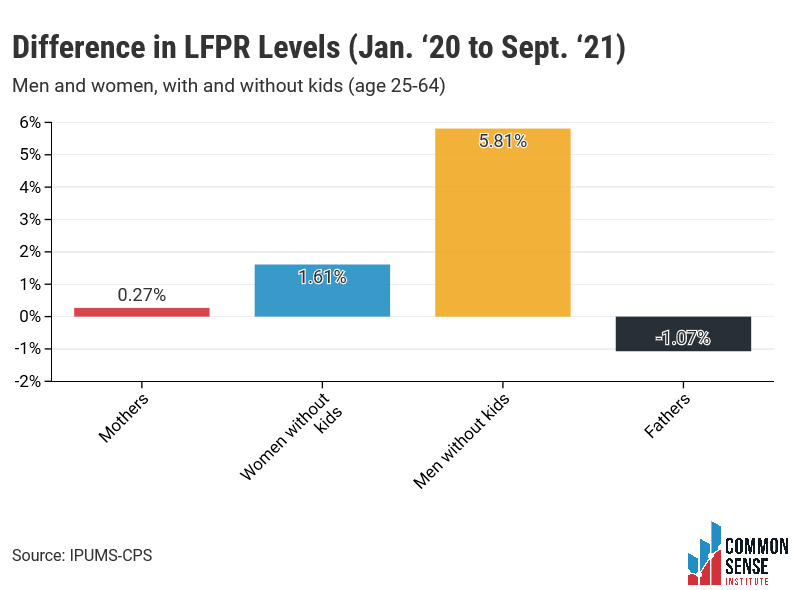Although September job growth was lower than what is needed to achieve a full recovery by January 2023, adjusted for population growth, Colorado reached an important recovery milestone last month. For the first time since the start of the pandemic, the labor force participation rate for Colorado mothers exceeded its pre-pandemic level.
Key Findings—Colorado September 2021 Employment Data (BLS CES Survey[1])
- Colorado added 5,100 total nonfarm jobs in September.
- At this pace, the state would reach pre-pandemic employment levels in January 2023.
- To recover to pre-pandemic employment levels by January 2023—after adjusting for population growth—Colorado needs add 9,884 jobs each month, on average.
- Total employment levels are down 2.8% or 78,400 jobs relative to pre-pandemic levels, ranking Colorado 17th in terms of September ‘21 job levels relative to Jan. ’20.
- New York ranked 50th and Hawaii 51st in terms of current job levels relative to Jan. ’20 and are down 8.9% and 13%, respectively.
- Idaho and Utah are the only 2 states that have employment levels higher than they had before the pandemic—they’ve added 12,600 and 48,000 additional jobs, respectively.
A Deeper Dive into Colorado Industries
- Some sectors in Colorado added jobs in September, and others lost
- The leisure and hospitality industry added 3,800 jobs.
- The education and health services industry lost 1,600 jobs.
- Though the leisure and hospitality industry has led the recovery by adding 53,700 jobs between Jan. ‘21 and September ‘21, it is still down 28,600 jobs relative to Jan. ‘20.
- Arts, entertainment, and recreation is down 10.5% (6,200 jobs).
- Accommodation and food services is down 7.8% (22,400 jobs).

Colorado Labor Force Update
Despite relatively weak monthly job growth, the overall unemployment rate dropped by .3 percentage points. This is partially driven by the slight decrease in the statewide labor force participation rate of .1 percentage points.
Key Findings—Colorado September ‘21 Labor Force Data (BLS[2], FRED[3], and IPUMS-CPS[4])
- September’s LFPR decreased by .1 percentage points to 68.2%, which is .6 percentage points below Jan. ’20’s LFPR of 68.8%.
- September’s unemployment rate decreased by .3 percentage points to 5.6%, which is still 2.9 percentage points above Jan. ’20’s unemployment rate of 2.7%.
- The LFPR of Colorado women increased from 62.6% last month to 63.4% and remains .75 percentage points below its pre-pandemic level.
- The national female LFPR decreased .3 percentage points to 55.9%, which is 1.9% lower than its pre-pandemic level.
- If Colorado’s September LFPR of women was the same as it was before the pandemic, there would be 17,532 more women in the state’s labor force today.
Women and Men, with and without Kids, in the Labor Force
- In September, for the first time since the start of the pandemic, the LFPR of mothers in Colorado (76.5%) was higher than what it was in Jan. ’20.
- The LFPR of women without kids continued to increase in September ’21 and surpassed its pre-pandemic level by 1.61 percentage points.
- The LFPR of men without kids continues to be higher now than it was in Jan. ’20, but that of fathers fell below its pre-pandemic level for the first time since March ’21.

[1] https://data.bls.gov/cgi-bin/dsrv?sm
[2] https://www.bls.gov/
[3] https://fred.stlouisfed.org/
[4] https://cps.ipums.org/cps/

